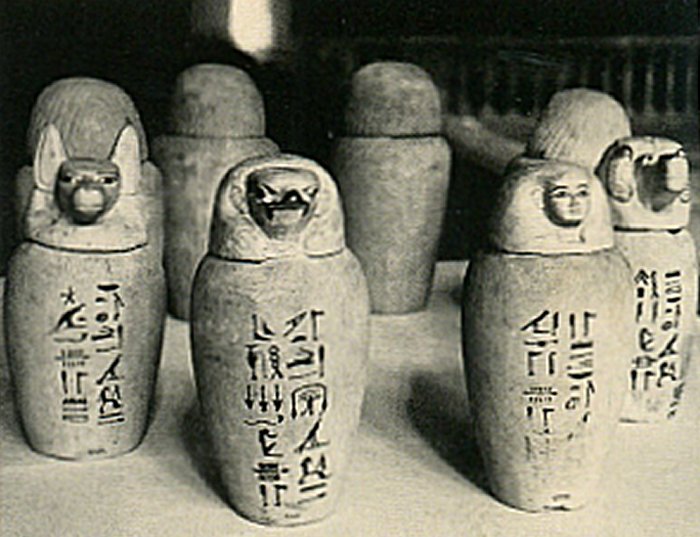The ‘Four Sons Of Horus’ And Their Connection To Stars In The Ursa Major Constellation
Ellen Lloyd - AncientPages.com - Ancient Egyptians were excellent astronomers who watched the movements of celestial objects with interest.
Egyptian astronomers who were priests possessed knowledge about many heavenly bodies. Gods and goddesses of ancient Egypt are closely connected to the heavens, and in ancient Egyptian mythology, there are several references to various stars.
Temples and pyramids were constructed in relation to the stars, zodiac, and constellations. Ursa Major in the northern sky is one interesting constellation connected to four enigmatic ancient Egyptian gods. Its name means “the great bear,” or “the larger bear,” in Latin’.
Ursa Major was known to many ancient civilizations and associated with several intriguing myths.
Ancient Egyptian Spirits – The Children Or Souls Of Horus
It is often stated that ancient Egyptians were obsessed with death. It’s wrong to accuse ancient Egyptians of this because death is a concept they were unfamiliar with. Ancient Egyptians believed in the afterlife, which means they never considered death the end of existence as some of us do today.
Since ancient Egyptians were such believers in life after death, one might think there was no room for the world of spirits in their faith.
The Book of the Dead gives us remarkable knowledge about ancient Egyptian beliefs. Credit: Public Domain
Ancient Egyptians also believed in spirits, just like many other ancient civilizations and modern people today, but their concept of spirits was slightly different.
We find references to spirits in the Egyptian Book of the Dead, and according to scholars, these beings are called ‘children/ souls’ of Horus. They are also known as the sons of Osiris. It is said that they protect a corner of the winds, north, west, east, and south.
The Four Sons Of Horus And Theirs Stars In The Ursa Major Constellation
The Book of the Dead mentions seven spirits said to be of divine origin. They are guardians of life and souls.
The seven ancient Egyptian protectors mentioned in the Book of the Dead are Mestha, Hapi, Tuamautef, Qebhsennuf, Maa-atef-f, Kheri-beq-f, and Heru-khenti-maa..
Four of these beings are depicted on canopic jars and sarcophagus. Each was associated with a particular organ and a different cardinal point on the compass. Being guardians of the deceased's internal organs, they were significant for the burial ritual.
Limestone canopic jars with the heads of Qebesenuef, Duamutef, Hapy, and Imsety. Originally these jars were decorated with human heads. Image credit: Egyptian Museum, Cairo
Since ancient Egyptians sincerely believed in the afterlife, a complex ritual set of burial customs was necessary to ensure an afterlife.
Mummification was an essential part of this ritual, but all vital internal organs had to accompany the deceased on his (her) journey to the underworld to be reborn. According to Egyptian beliefs, this precious organ was the source of wisdom and the seat of memory and emotions of the human being. However, the dead's heart was never among the organs chosen for preservation in canopic jars.
These four diving beings are often called the Four Sons Of Horus. Their names were Imsety, Duamutef, Hapi, Qebehsenuef.
From the Book of the Dead, we learn that these four Egyptian gods are Behind ‘The Thigh’ in the Northern heaven.
According to E.A.Wallis Budge (1857 - 1934), an English Egyptologist, Orientalist, and philologist who worked for the British Museum and published numerous works on the ancient Near East, among them the “Egyptian Hieroglyphic dictionary”, this word hieroglyphic word means ‘the constellation of the Great Bear’.
Ursa Major, or the Great Bear, is the 3rd largest constellation in the night sky.
See also: More Myths And Legends
In ancient Egypt, this constellation sounded like ‘Meskh-ti’. If E.A.Wallis Budge is correct in his hieroglyph translation, we can conclude that the Four Sons Of Horus were connected to the Great Bear constellation in the Northern Heavens.
Here we come across the number 7, a mystical number of the Universe and one of the most sacred numbers. In this beautiful constellation, we can distinguish seven bright stars forming what is familiarly termed “The Dipper.” It is also referred to as the “Plough” or “Frying Pan,” with four stars forming a pan shape and the other three a handle.
As stated before, the Book of the Dead mentioned seven guardians of life and souls. Were all these divine Egyptian beings associated with the Ursa Major constellation?
Updated on July 7, 2022
Written by Ellen Lloyd – AncientPages.com
Copyright © AncientPages.com All rights reserved. This material may not be published, broadcast, rewritten or redistributed in whole or part without the express written permission of AncientPages.com
More From Ancient Pages
-
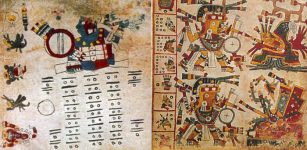 Ancient Codex Cospi: Intriguing Pre-Columbian Ritual Manuscript From Central Mexico
Featured Stories | Aug 10, 2017
Ancient Codex Cospi: Intriguing Pre-Columbian Ritual Manuscript From Central Mexico
Featured Stories | Aug 10, 2017 -
 King Henry VIII’s Walking Staff And Other Unusual Weapons
Artifacts | Nov 1, 2017
King Henry VIII’s Walking Staff And Other Unusual Weapons
Artifacts | Nov 1, 2017 -
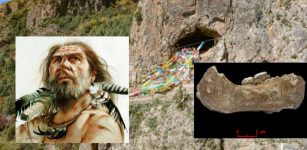 Denisovans Were First To Adapt To High Altitude And Harsh Conditions Of Tibetan Plateau
Archaeology | May 2, 2019
Denisovans Were First To Adapt To High Altitude And Harsh Conditions Of Tibetan Plateau
Archaeology | May 2, 2019 -
 The Phoenicians – And Their Great Experience As Sea Traders
Civilizations | Sep 6, 2015
The Phoenicians – And Their Great Experience As Sea Traders
Civilizations | Sep 6, 2015 -
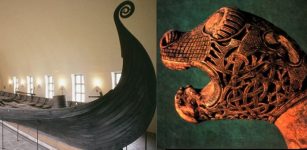 Oseberg Ship: Amazingly Well-Preserved Viking Burial Ship
Featured Stories | Jun 15, 2016
Oseberg Ship: Amazingly Well-Preserved Viking Burial Ship
Featured Stories | Jun 15, 2016 -
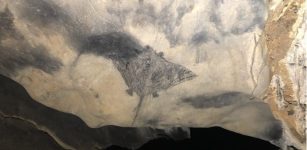 New Dating Of Intriguing Cave Art Reveals History Of Puerto Rican People
Archaeology | Oct 19, 2023
New Dating Of Intriguing Cave Art Reveals History Of Puerto Rican People
Archaeology | Oct 19, 2023 -
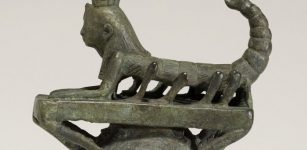 Mysterious Scorpion Goddesses In Myths And Legends
Egyptian Mythology | Jan 26, 2016
Mysterious Scorpion Goddesses In Myths And Legends
Egyptian Mythology | Jan 26, 2016 -
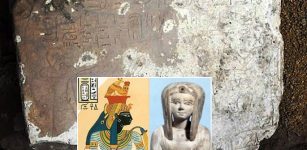 Limestone Stela Of Liberation Discovered In Kom Ombo Temple In Aswan, Egypt
Archaeology | Oct 17, 2018
Limestone Stela Of Liberation Discovered In Kom Ombo Temple In Aswan, Egypt
Archaeology | Oct 17, 2018 -
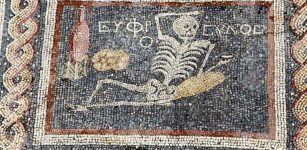 ‘Skeleton Mosaic’ – 2,400-Year-Old Scenes Depicted On Glass Artwork Found In Turkey
Archaeology | Apr 23, 2016
‘Skeleton Mosaic’ – 2,400-Year-Old Scenes Depicted On Glass Artwork Found In Turkey
Archaeology | Apr 23, 2016 -
 Thousand Unearted Artifacts Reveal ‘Major’ Ancient Migration To Timor Island
Archaeology | May 23, 2024
Thousand Unearted Artifacts Reveal ‘Major’ Ancient Migration To Timor Island
Archaeology | May 23, 2024 -
 Oxford University Is Older Than The Aztec Empire – Historical Records Say
Ancient History Facts | Dec 5, 2017
Oxford University Is Older Than The Aztec Empire – Historical Records Say
Ancient History Facts | Dec 5, 2017 -
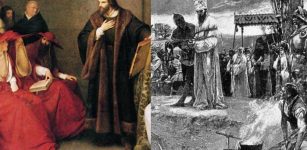 Jan Hus: Czech Reformer And Bohemian Religious Leader Was Burned At Stake For Heresy
Featured Stories | Dec 17, 2019
Jan Hus: Czech Reformer And Bohemian Religious Leader Was Burned At Stake For Heresy
Featured Stories | Dec 17, 2019 -
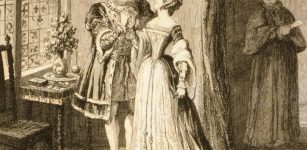 On This Day In History: Anne Boleyn, The Second Wife Of Henry VIII – Beheaded For Adultery, Treason And Incest – On May 19, 1536
News | May 19, 2016
On This Day In History: Anne Boleyn, The Second Wife Of Henry VIII – Beheaded For Adultery, Treason And Incest – On May 19, 1536
News | May 19, 2016 -
 Mystery Of The Lost Continent Destroyed By An Ancient Cataclysm – Mysterious Islands – Part 2
Featured Stories | Aug 16, 2021
Mystery Of The Lost Continent Destroyed By An Ancient Cataclysm – Mysterious Islands – Part 2
Featured Stories | Aug 16, 2021 -
![Photo taken on Dec 20, 2015 shows hoof-shaped gold ware unearthed from the main coffin in the Haihunhou (Marquis of Haihun) cemetery, East China's Jiangxi province. [Photo/Xinhua]](https://www.ancientpages.com/wp-content/uploads/2015/12/MarquisofHaihuntomb1-307x150.jpg) Does A 2,000-Year-Old Tomb Belong To Marquis of Haihun? – Search For His Seal Continues
Archaeology | Dec 25, 2015
Does A 2,000-Year-Old Tomb Belong To Marquis of Haihun? – Search For His Seal Continues
Archaeology | Dec 25, 2015 -
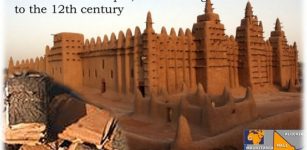 Ancient Manuscripts Of Mythical City Of Timbuktu
Artifacts | Jun 12, 2014
Ancient Manuscripts Of Mythical City Of Timbuktu
Artifacts | Jun 12, 2014 -
 Unique Medieval Cog Shipwrecks And Artifacts Found In Sweden
Archaeology | Dec 3, 2022
Unique Medieval Cog Shipwrecks And Artifacts Found In Sweden
Archaeology | Dec 3, 2022 -
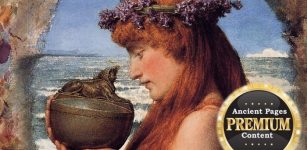 The Opening Of Pandora’s Box May Have Been A Real Event
Myths & Legends | Jun 22, 2021
The Opening Of Pandora’s Box May Have Been A Real Event
Myths & Legends | Jun 22, 2021 -
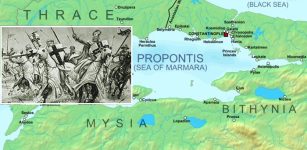 On This Day In History: Battle Of Rhyndacus – Oct 15, 1211
News | Oct 15, 2016
On This Day In History: Battle Of Rhyndacus – Oct 15, 1211
News | Oct 15, 2016 -
 Longvek – Ancient Historical City That Sheds Light On Cambodia’s ‘Dark Age’
Archaeology | Jan 13, 2016
Longvek – Ancient Historical City That Sheds Light On Cambodia’s ‘Dark Age’
Archaeology | Jan 13, 2016



